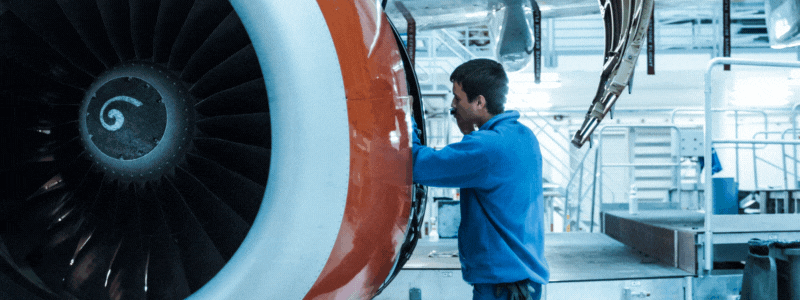
When it comes to aircraft, safety comes first and foremost. The latest technology, engines, countless parts, electronic and electrical systems, etc., are used to assemble an aeroplane. Routine inspections, management, and maintenance of aeroplanes become increasingly important when parts manage to wear out and degrade over time. Engineers trained in aircraft maintenance (AME) are uniquely qualified to inspect the aircraft, identify any problems or snags, analyse them, and then report and resolve them. The plane can accommodate a significant number of passengers. As it pertains to the safety and security of aircraft and their passengers, the role of Aviation Maintenance Engineering (AME) requires a high level of decency and dedication. Before the flight, any difficulties with the aircraft must be fixed by the qualified AME.

To work as an aircraft maintenance engineer, a candidate must possess an aircraft maintenance engineering licence. It is important to do to apply to work as an AME in the aviation sector. The DGCA of the Indian government issues the licence. The aircraft maintenance engineering licence is highly sought after since it allows for operation in both the public and private sectors in both India and abroad.
The following extra skills are advantageous for becoming an AME:
Mathematical ability: Math helps applicants increase their ability to solve issues rapidly. If a candidate has excellent maths skills, they can respond to the question in aeroplanes rapidly.
Ability to work in a team: Because AMEs handle aeroplanes together, candidates must be comfortable working in teams.
Accountability: AME is in charge of overseeing the security and safety of aeroplanes.
Ability to work irregular hours: AMEs must have this skill in both good and bad times. Each problem can be handled by an AME.
Communication ability: AME should be a skilled communicator. He needs to speak English well.
Confidence: AME is able to exhibit himself professionally and with assurance. The AME should approach his task with positivity.
The following steps must be taken to obtain an AME licence:
Completion of course (COC): Upon completion of a two-year academic programme at an AME Institute, a course is considered completed (COC). The candidate receives the COC. The DGCA has awarded AME institutions in India its permission. In India, the DGCA answers to the Ministry of Civil Aviation.
Modules: The DGCA of the Indian government runs the modules. There are, in fact, 17 modules in total, but candidates must pass each one in accordance with the stream they have chosen. The modules must be successfully completed by candidates.
Experience: The entire AME course takes four years. While the last two years will be spent gaining flight instruction, the first two years will be spent in an academic programme. The training-related knowledge will be considered experience when applying for an AME licence.


Identification and diagnosis of issues with aircraft systems is the responsibility of AMEs. Visual inspections, the use of specialist instruments and equipment, or data analysis from the aircraft's systems are all necessary to do this. The best line of action is decided by AMEs when the issue has been discovered.
AMEs regularly evaluate aircraft systems to find possible flaws before they develop into significant difficulties. This entails assessing electrical systems, verifying fluid levels, and gauging component wear and tear. Regular inspections allow AMEs to spot problems early on and fix them before they become a safety threat.
Regular maintenance on aircraft systems is carried out by AMEs. This involves maintenance procedures, including oil changes, filter replacements, and checks and adjustments to brake and landing gear systems. AMEs are able to prolong the life of the components and maintain aircraft systems functioning at their best by performing routine maintenance.
AMEs are in charge of identifying the issue and selecting the most effective line of action for repairs. This could entail taking apart and replacing parts, adjusting systems, or doing more complex repairs like rebuilding engines. To perform repairs, AMEs must be highly skilled and have a complete understanding of the aircraft systems they are working on.
All work performed on the aircraft must be meticulously documented by AMEs. Reporting any issues that are found, the actions are taken to address them, and any portions or components that were changed is part of this. These records are used to trace the history of the aircraft's maintenance and repairs and to make sure that all work is carried out in accordance with rules and standards.
AMEs are responsible for making sure that all of their work complies with the rules and guidelines established by the aviation authorities. This entails carrying out the necessary inspections, keeping the aircraft in good condition in line with the manufacturer's instructions, and making sure that all repairs and maintenance are carried out in compliance with the regulations established by the aviation authorities.
In conclusion, a crucial component of an AME's job is troubleshooting and fixing aircraft systems. The duties of AMEs include locating and fixing problems, carrying out routine maintenance and inspections, keeping thorough records of all work, and ensuring compliance with rules and standards. By doing this, AMEs contribute significantly to maintaining the safety and dependability of aviation systems and to keeping the aircraft in the air.